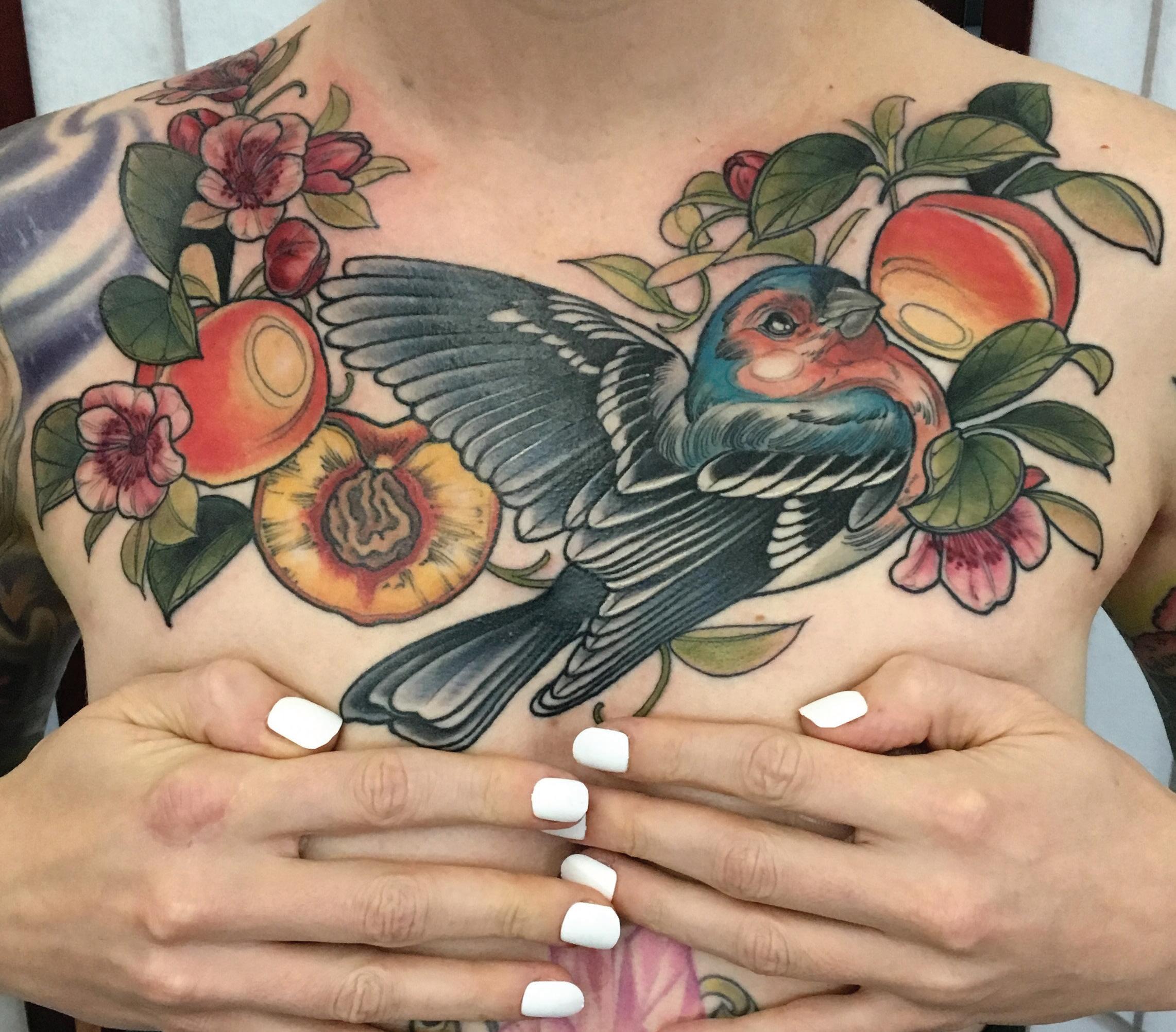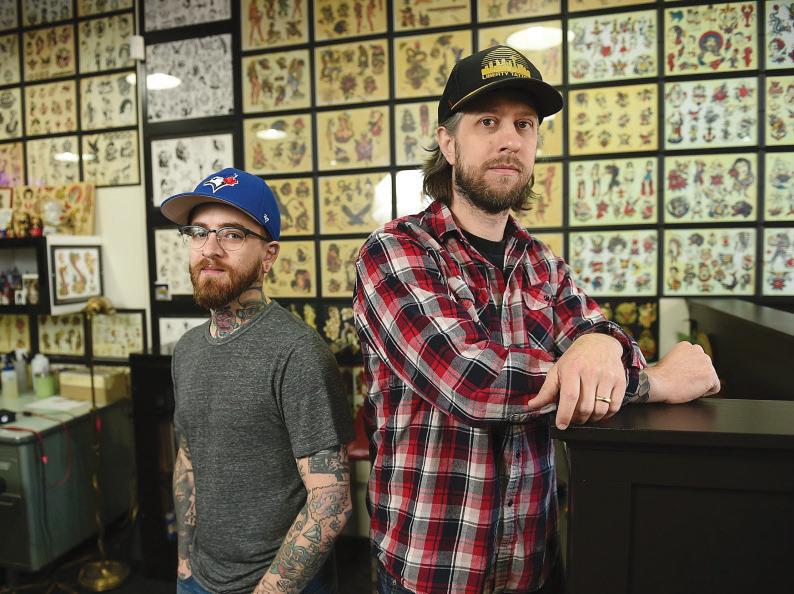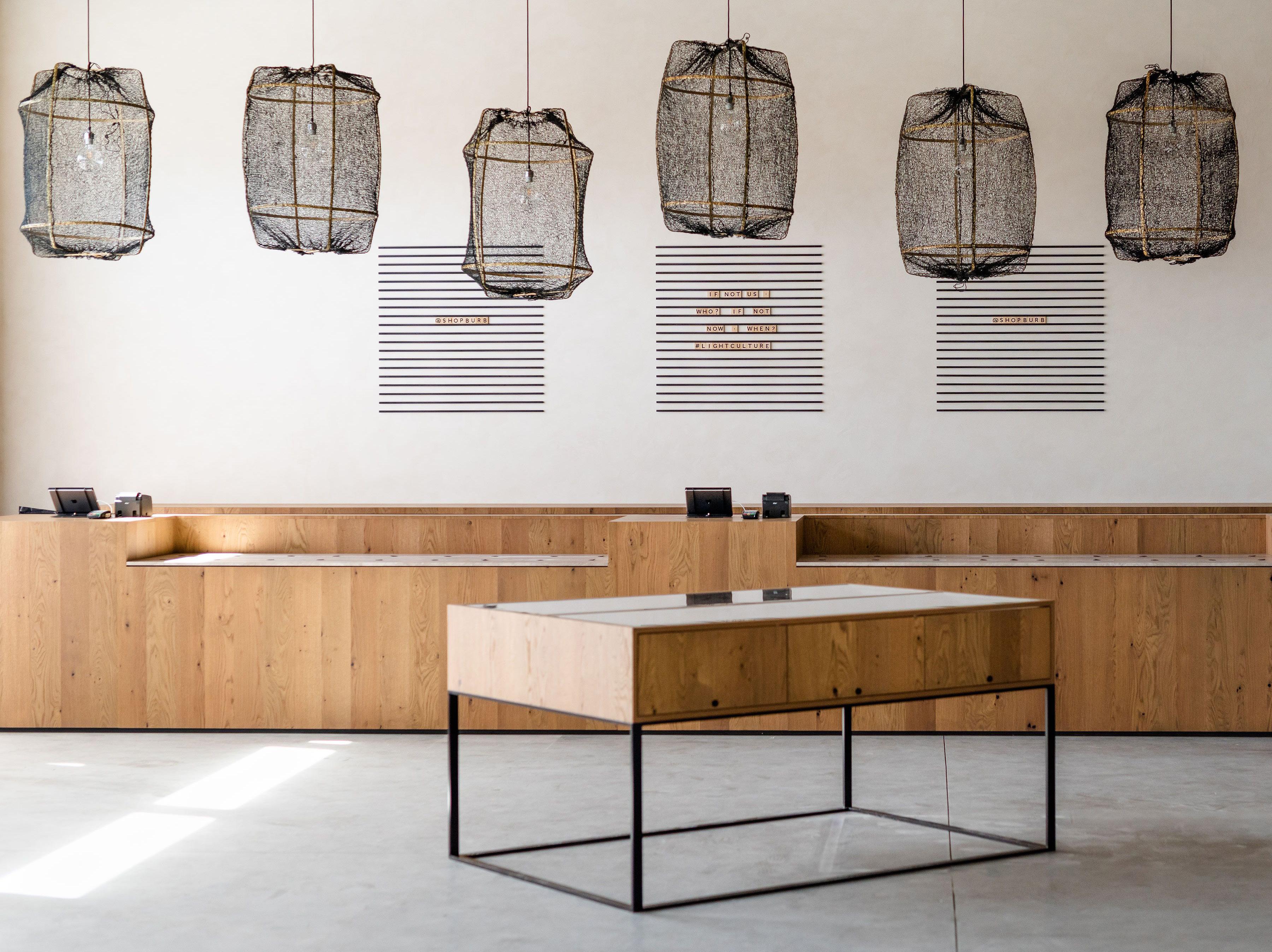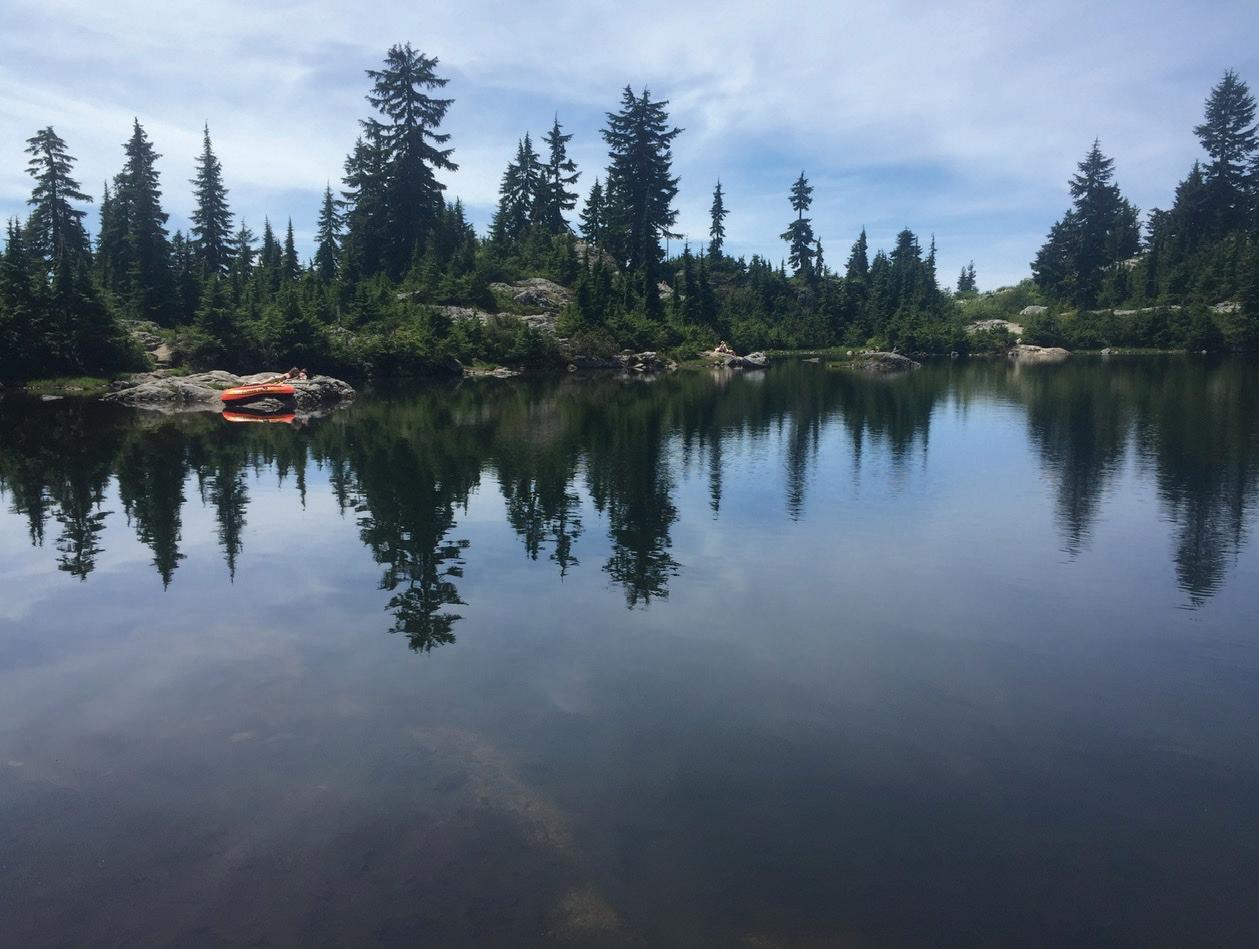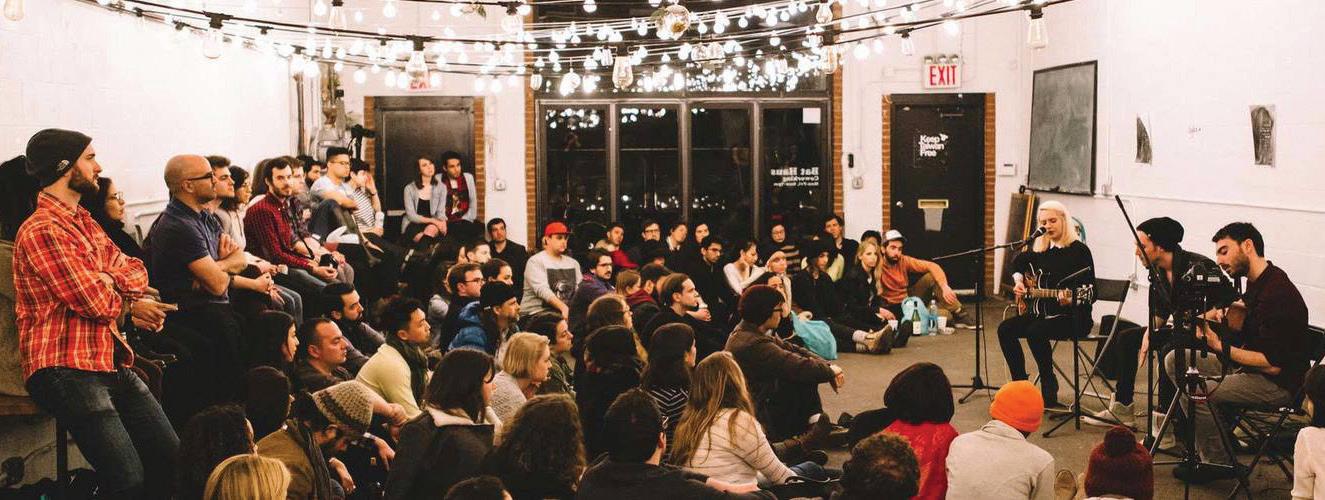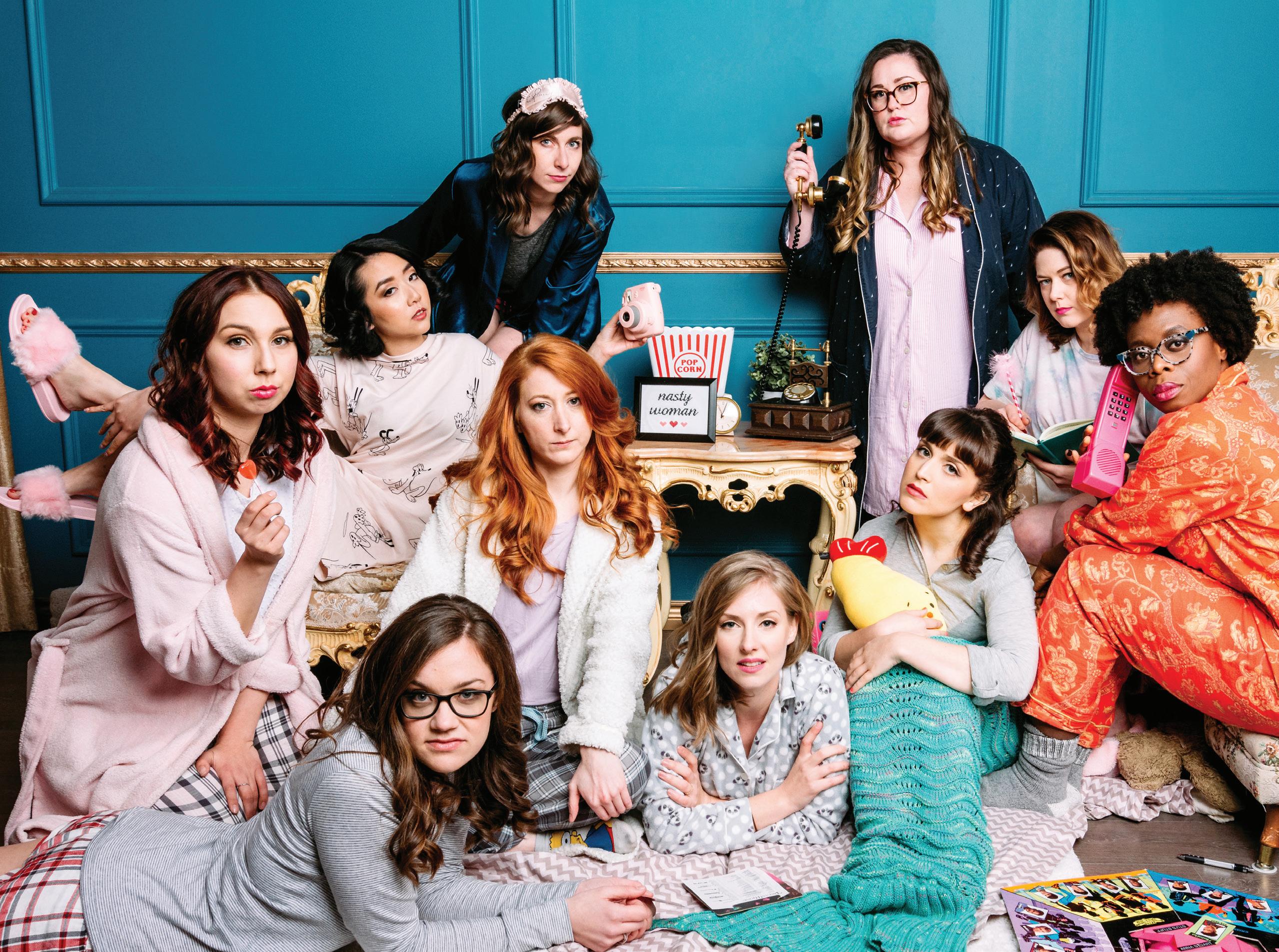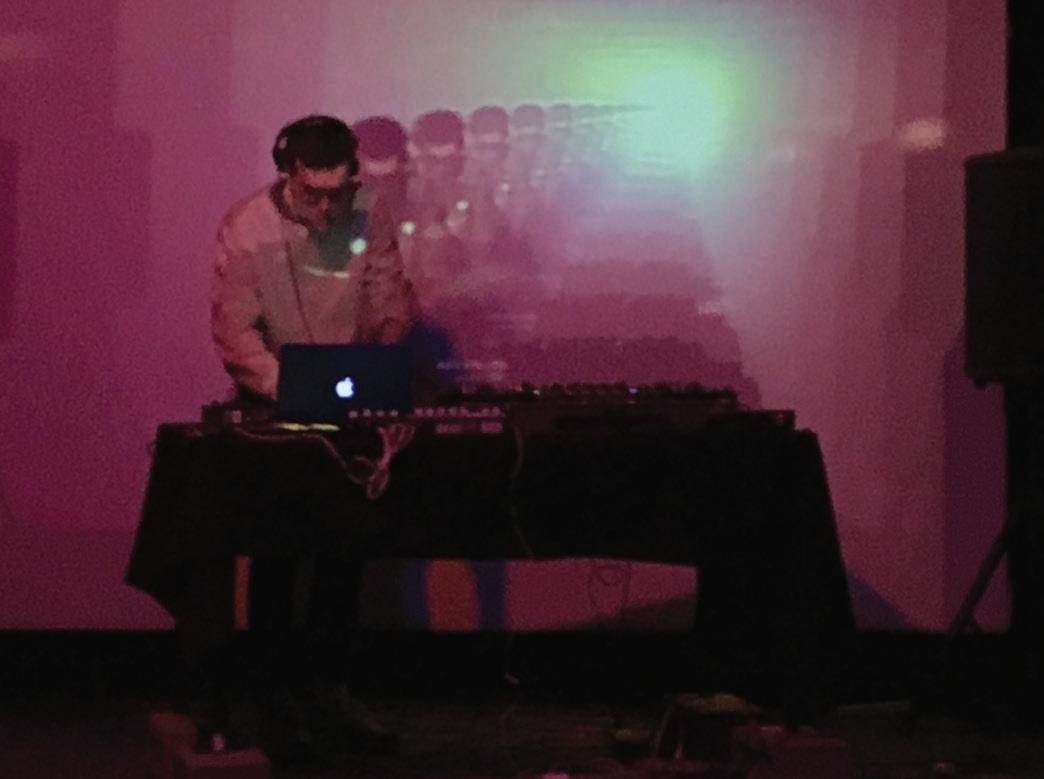
6 minute read
SHOTS FIRED
from Underground Magazine
by cmns490
Vancouver Gun Range takes aim at firearms stigma through education, information and exhilarating fun. story by JUAN RIVERA
Popular shooting ranges such as the Vancouver Gun Range see upwards of 20,000 guests a year Amid the thunderous bangs of gunshots of all calibers fired, Gabrielle prepares a tan-coloured Glock pistol and a pink-inscribed Smith & Wesson rifle for a pair of guests. The young range safety officer carefully explains safe handling of the firearms—or the world’s most expensive hole punch, as some owners endearingly call them—and hands the pieces off to the eager, under-30 Asian couple, who fire at the green silhouette target downrange. As they shoot, it’s hard to tell what they’re wrestling with more—the recoil of the gun, or the urge to grin.
Advertisement
And that seems to be the case with most guests I see in here. In another lane, a half-dozen young guys take turns shooting a shotgun, laughing and recording each other for the ’gram. “For [the] general public coming in, it’s often a fun couple or group experience,” explains Vancouver Gun Range’s manager Winston Mew.
Founded in 2007 by a group of handgun enthusiasts, Vancouver Gun Range is one of two indoor shooting ranges in the Lower Mainland. With a couple of shooting bays and a wide variety of firearms, Vancouver Gun Range sees over 20,000 guests a year,
Taking aim, a determined man looks down the barrel of a gun
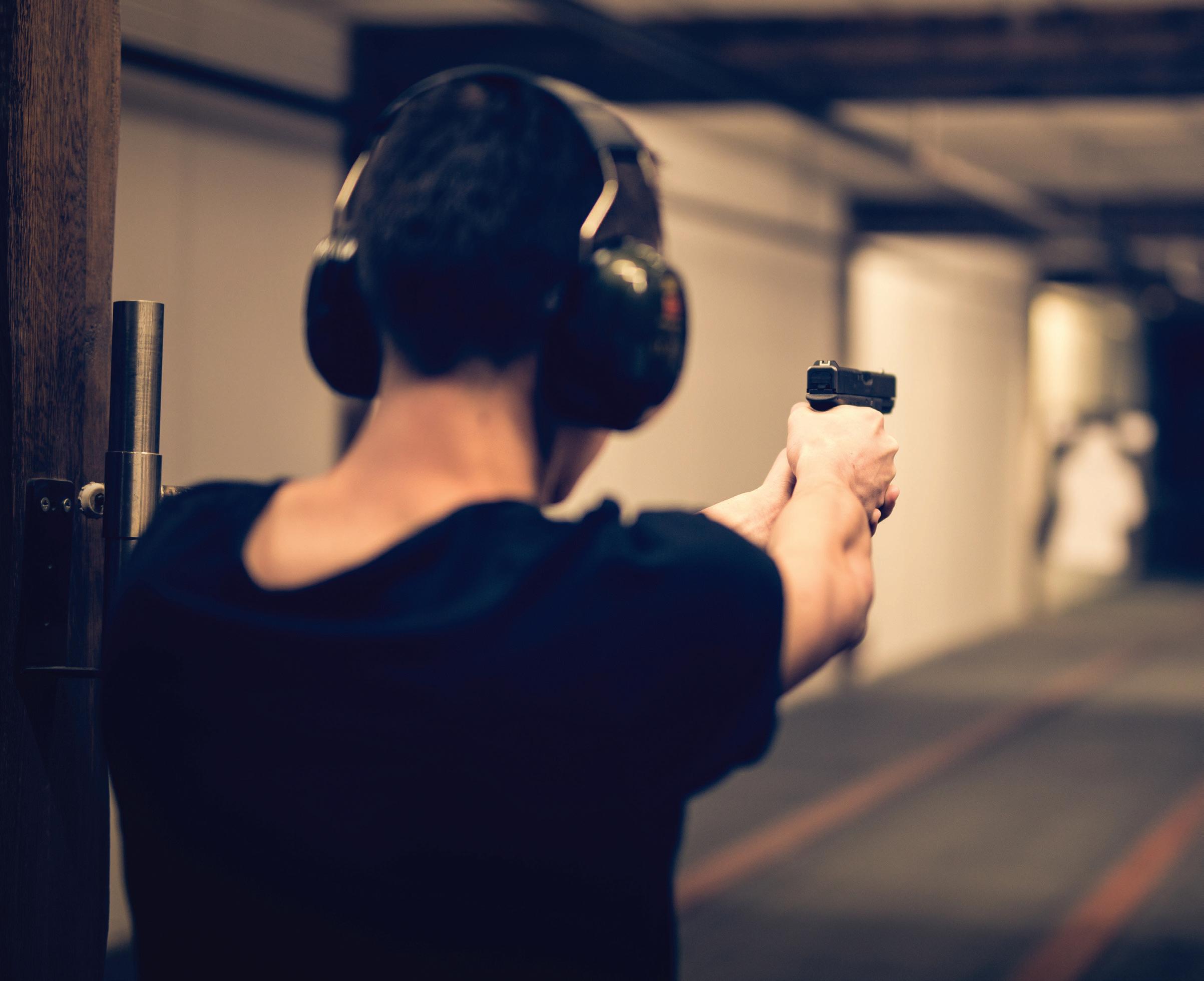
not including its members.
And while our closest neighbour aggressively protects its second amendment rights, there’s little mention of Canadian gun culture in the local media, so much so that you might wonder if Canadians are even allowed to go a shooting range. But inside this grey PoCo commercial unit, soundproofed walls separate a well-lit storefront from a multi-lane firing range, where licensed gun owners and visitors alike try their hand at shooting sports.
As it turns out, Canada’s firearm laws are complicated. Classified into three groups: non-restricted, restricted and prohibited, firearms have tighter and tighter licensing and storage requirements the higher up the scale you go. Non-restricted firearms include pieces like grandpa’s old shotgun. Restricted pieces include all handguns and many semi-automatic rifles that fall under 470mm in barrel length. Lastly, prohibited firearms include those that the RCMP find have no hunting or sporting purposes such as fully-automatic rifles or handguns with barrels under 105mm.
But to shoot at the gun range, the legal requirements are much simpler: all you need to be here tonight is a valid ID and supervision by a licensed firearms owner, such as a range officer. That relative ease, coupled with the excitement the range offers, makes it a unique spot for a night out, a stag or just to blow off steam by lighting up a paper target with bullets.
In addition to delivering a shot of lead (and adrenaline), the range helps visitors become licensees. Every month, instructors and students come
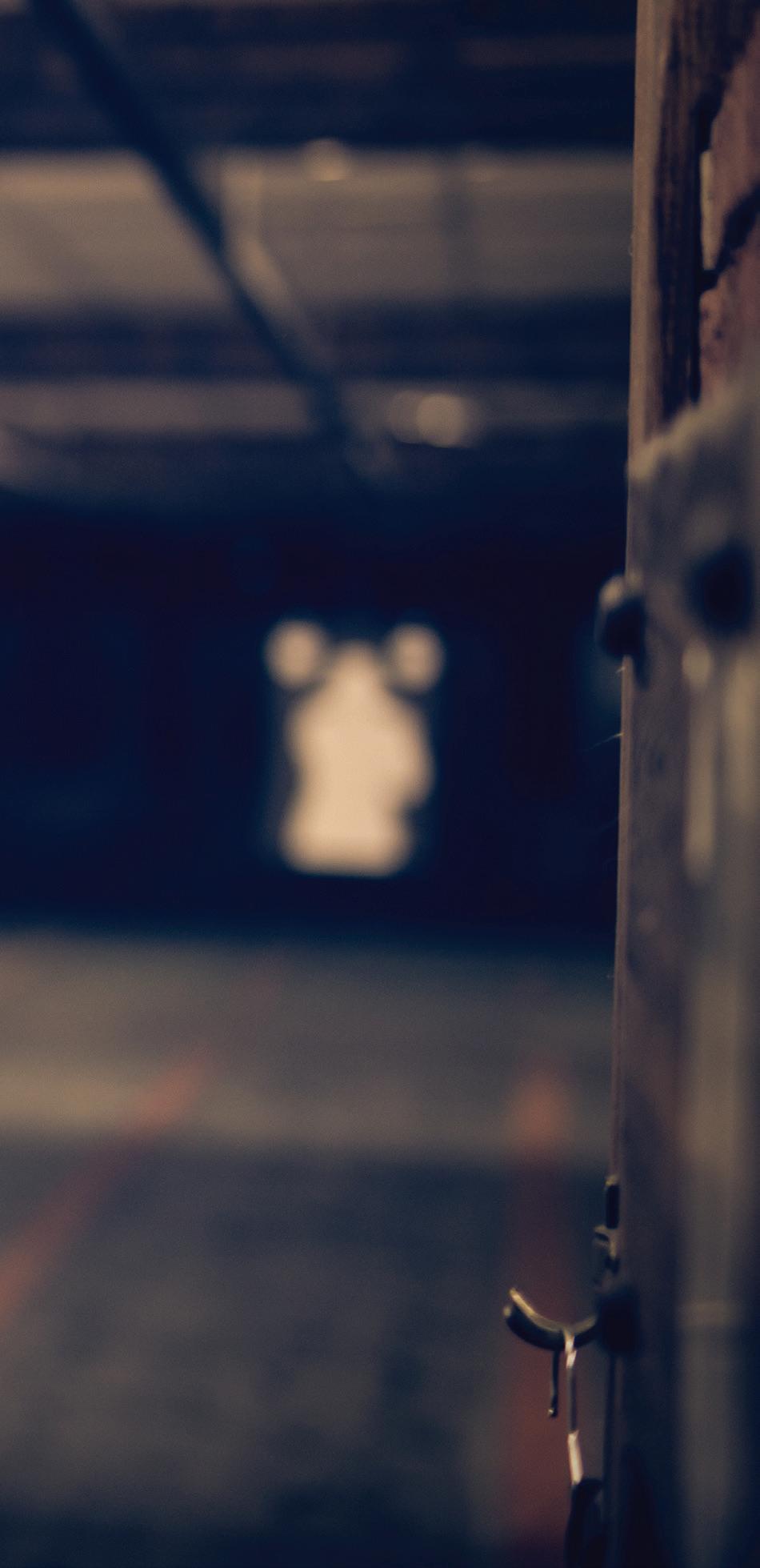
together for a new class of the Canadian Firearms Safety Course in which attendees learn the history of firearms, calibers, safety practices, storage laws and more. At the end, those who can pass the theory and practical exams can submit their Possession and Acquisition License (PAL) application to the RCMP.
A loud example of the changing demographics at the range can be seen when walking into the range and seeing that it’s not all burly men in plaid shirts. In fact, Mew notes that the ratio of women to men shooters seems to be on the rise. “It’s increasing,” he says. “I’d say at times we’re about 40% female for guests.” Around 20% of members are women, he notes.
Younger crowds are also arriving at the scene. Even though target shooting isn’t particularly cheap, the majority of visitors and members on this particular Saturday night are under 30. And Mew has noticed that interest in the sport continues to trend younger. “Just over reading break, my daughter brought in a bunch of her friends from Langara (College),” says Mew. “Four ladies and three gentlemen [came] for some shooting and it was awesome and they had a lot of fun.”
Mew, who was introduced to guns via a coupon offer eight years ago, enjoyed the experience and went on to acquire his PAL. In fact, many visitors follow the same route. “The first time I held a gun was in Oregon with my family. From that point on my curiosity was piqued,” recalls Jeremy Honeyman, now a licensed firearms owner. “When I turned 22, I decided to get my license so I could inherit my grandfather’s collection and hobby, and memorialize him that way.”
But not all guns are created equal. After passing a new firearms law in his first term—Bill C-71, which banned a couple of rifles and set up more stringent requirements for firearms retailers—the Liberal Party of Canada campaigned for re-election on a promise to ban “military-style assault rifles.” It’s the terminology, that appears to have everybody at odds. The term “assault rifle” is believed to have been popularized by Hitler who, for propaganda purposes, named the MP-43 submachine gun the Sturmgewehr 44, which translates to “assault rifle 44.” Nowadays, however, it has come to mean a variety of things. “The lack of definitions and uncertainty is what really complicates the issue,” says Mew.
“I think they need to first define what it is they are concerned with, what impact it’s going to have on the general public, and then how to execute that.”
While legislation could potentially restrict the kind of firearms that the range and its members are able to possess and fire, Mew hopes the range won’t be too affected.
In the meantime, it will continue to be business as usual at Vancouver Gun Range, and Canada’s gun laws stay stringent. And the range remains a fun spot to blow off some steam on a Saturday night.
Tonight, I’m here to test out how it feels, too. After warming up with a nine-millimeter handgun, I decide to turn it up to 11. Heading back out to the storefront, I pick the biggest handgun I can see: the Smith & Wesson 500. Famed for having a high amount of recoil – the “kick” felt when a gun fires as a result of the quick combustion of the gunpowder—this one generates enough excitement to overcome my better senses and I set out to fire the wrist-aching revolver.
“It’s going to dry fire twice, then on the third shot it’ll fire,” warns Gabrielle. After the two shaky test shots, my real shot comes several inches below the bullseye—likely due to a lucky combination of excitement, anticipation and, frankly, just bad aim.
And just like that, after the 30-minute drive and the five minutes spent signing a waiver, I got my Dirty Harry moment—one of the leading reasons folks choose some of the bigger revolvers, says Mew. Because sometime and somewhere, we saw it in a movie. n
You can own a firearm in Canada, but just how do you legally get your hands on one?
TAKE THE TEST
Licensee hopefuls must first pass the Canadian Firearms Safety Course.
PUT PEN TO PAPER
Next, they must send their application complete with references and an $80 processing fee to Miramichi, NB. At this point, applicants must wait 28 days before their file is even opened.
GETTING TO KNOW YOU
After the waiting period, the Chief Firearms Officer will review the file and interview references to gain an idea of the applicant’s suitability to firearm ownership.
GET BUSY BUYIN’
If they are satisfied the applicant passes muster, the file gets approved and the license is issued within two weeks.

